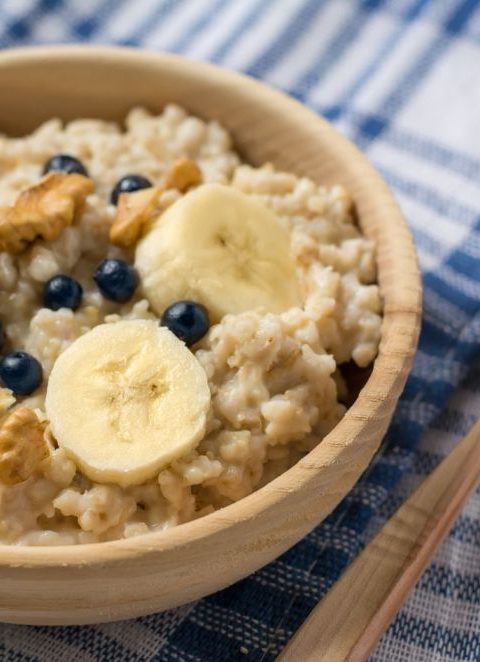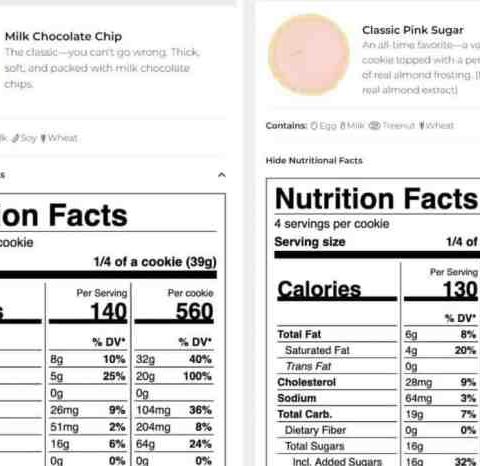Culinary Uses and Preparation Methods

Yellow squash nutrition facts – Yellow squash, with its delicate flavor and tender texture, lends itself to a wide variety of culinary applications. Its versatility allows it to be incorporated into both simple and sophisticated dishes, making it a valuable addition to any cook’s repertoire. Proper preparation methods are key to retaining its nutritional value and enhancing its inherent deliciousness.
Yellow squash is remarkably adaptable to various cooking techniques. Grilling imparts a smoky char, enhancing its sweetness; sautéing allows for quick cooking and easy incorporation into other dishes; and roasting brings out its natural sweetness and creates a tender, slightly caramelized texture. Regardless of the method chosen, minimizing cooking time helps to preserve its delicate nutrients, such as vitamin C and beta-carotene, which are sensitive to heat.
Steaming is also a great option for retaining nutrients.
Cooking Methods and Nutritional Retention
To maximize the nutritional value of yellow squash during cooking, it’s recommended to use methods that minimize cooking time and water loss. Steaming or quickly sautéing are excellent choices. When grilling or roasting, use high heat for a shorter cooking time to prevent overcooking and nutrient degradation. Avoid overboiling, as this can leach out water-soluble vitamins. Adding yellow squash to dishes at the end of the cooking process, as opposed to at the beginning, can also help retain more nutrients.
Flavor Pairings
The mild, slightly sweet flavor of yellow squash pairs well with a range of ingredients, offering opportunities for creative culinary exploration. Its delicate nature complements bolder flavors without being overpowered. Some excellent pairings include herbs like basil, oregano, and thyme; cheeses like feta or goat cheese; and citrus fruits like lemon or lime. It also works well with garlic, onions, and other savory vegetables.
Yellow Squash Recipes
These three recipes showcase the versatility of yellow squash, highlighting its adaptability to different cuisines and flavor profiles. Each recipe emphasizes simple preparation while maximizing flavor and nutritional value.
| Recipe Name | Ingredients | Instructions | Nutritional Highlights |
|---|---|---|---|
| Sautéed Yellow Squash with Garlic and Herbs |
|
|
Good source of vitamin C and vitamin A. |
| Roasted Yellow Squash with Feta and Lemon |
|
|
Good source of vitamin A and fiber. Provides calcium from feta cheese. |
| Yellow Squash Fritters |
|
|
Good source of vitamin C and fiber. Provides protein from the egg. |
Yellow Squash and Health Conditions

Yellow squash, a versatile and nutrient-rich vegetable, offers potential benefits for various health conditions. Its low calorie count, high fiber content, and rich vitamin and mineral profile contribute to its potential role in supporting overall well-being and managing specific health concerns. However, it’s crucial to remember that yellow squash is not a cure-all, and its impact varies depending on individual factors and overall dietary patterns.
Yellow squash offers a low-calorie, nutrient-rich option, packed with vitamins and fiber. However, for those seeking a higher protein and fat content, a different nutritional profile is needed; you might consider looking at the ribeye steak nutrition facts for comparison. Returning to yellow squash, its versatility makes it a great addition to various healthy dishes, offering a good source of vitamin C and potassium.
Yellow Squash and Diabetes Management, Yellow squash nutrition facts
The high fiber content in yellow squash can help regulate blood sugar levels. Fiber slows down the absorption of glucose into the bloodstream, preventing rapid spikes in blood sugar after meals. This is beneficial for individuals with type 2 diabetes, who often struggle with managing blood glucose fluctuations. Additionally, yellow squash’s low glycemic index (GI) further contributes to its suitability in a diabetic diet.
While yellow squash alone won’t manage diabetes, it can be a valuable component of a balanced meal plan designed to control blood sugar. The potassium content also plays a role in regulating blood pressure, another factor relevant in diabetes management.
Yellow Squash and Cardiovascular Health
Yellow squash contributes to cardiovascular health in several ways. Its richness in potassium helps maintain healthy blood pressure, a critical factor in reducing the risk of heart disease. The high fiber content aids in lowering cholesterol levels, further supporting heart health. Additionally, the presence of antioxidants like vitamin C helps protect cells from damage caused by free radicals, which are implicated in the development of cardiovascular disease.
These combined benefits position yellow squash as a supportive element in a heart-healthy diet.
Potential Interactions with Medications and Supplements
While generally safe, yellow squash can potentially interact with certain medications or supplements. For example, its high potassium content might pose a concern for individuals taking potassium-sparing diuretics, potentially leading to dangerously high potassium levels (hyperkalemia). Consult a healthcare professional or registered dietitian if you have concerns about potential interactions, particularly if you are on medication or have pre-existing health conditions.
They can help determine the appropriate level of yellow squash consumption based on your individual circumstances.
Considerations for Dietary Restrictions and Allergies
Yellow squash is generally well-tolerated, but individuals with specific dietary restrictions or allergies should exercise caution. Those following a low-FODMAP diet might need to limit their intake, as some individuals experience digestive discomfort from the fructans in yellow squash. Also, although rare, some individuals might have an allergic reaction to squash, manifesting as skin rashes, digestive issues, or respiratory problems.
In such cases, avoiding yellow squash entirely is crucial. Always check food labels carefully if concerned about potential cross-contamination with other allergens.
Descriptive Image of Yellow Squash
Imagine a vibrant yellow vegetable, roughly oblong or cylindrical in shape. Its skin is smooth and slightly glossy, with a color ranging from pale yellow to a deeper, golden hue. The texture is firm yet tender, yielding slightly to gentle pressure. The size varies, ranging from small and slender, roughly the size of a person’s forearm, to larger specimens that may reach up to a foot in length.
The flesh is a pale, creamy yellow, with a subtly sweet and slightly earthy flavor.
Yellow Squash Sourcing and Storage: Yellow Squash Nutrition Facts
Selecting and storing yellow squash properly ensures you enjoy its optimal flavor and nutritional benefits. Choosing high-quality squash and employing appropriate storage methods significantly impacts its shelf life and prevents spoilage. Understanding the environmental impact of production and consumption allows for more mindful purchasing decisions.
To select the freshest yellow squash, look for firm, smooth-skinned specimens without blemishes, bruises, or soft spots. Avoid squash that feels spongy or has a dull appearance. The color should be a vibrant, consistent yellow, indicating ripeness. At farmers markets, inquire about growing practices to support sustainable agriculture. Smaller squash tend to be more tender.
Selecting High-Quality Yellow Squash
The key to selecting optimal yellow squash lies in careful observation of its physical characteristics. A vibrant yellow color, firm texture, and absence of blemishes are indicative of freshness. Avoid any squash that exhibits signs of damage or decay.
Proper Storage Techniques for Yellow Squash
Proper storage is crucial for maintaining the quality and extending the shelf life of yellow squash. Different methods are suitable depending on the timeframe for consumption.
- For immediate use (within 1-2 days): Store unwashed yellow squash in a plastic bag in the refrigerator’s crisper drawer.
- For longer storage (up to a week): Wrap the squash individually in paper towels to absorb excess moisture, then place them in a plastic bag in the refrigerator’s crisper drawer. This helps prevent spoilage by controlling humidity.
- Freezing yellow squash: Wash, peel, and chop the squash before blanching it in boiling water for 2-3 minutes. Immediately plunge into ice water to stop the cooking process. Drain thoroughly and package in freezer-safe containers or bags, removing as much air as possible.
Environmental Impact of Yellow Squash Production and Consumption
The environmental impact of yellow squash production and consumption encompasses several factors, including water usage, pesticide application, transportation, and waste generation. Sustainable practices aim to minimize these impacts.
- Water usage: Yellow squash cultivation requires significant water resources. Choosing locally grown squash reduces transportation-related emissions and supports water conservation efforts in your region.
- Pesticide use: Conventional farming often relies on pesticides, which can harm beneficial insects and pollute water sources. Opting for organically grown yellow squash minimizes exposure to these chemicals.
- Transportation: The distance yellow squash travels from farm to market contributes to greenhouse gas emissions. Buying locally sourced squash significantly reduces this impact.
- Waste reduction: Proper storage and planning help minimize food waste. Utilize leftover squash in various dishes to avoid discarding edible portions.
Preparing Yellow Squash for Cooking
Preparing yellow squash for cooking is a straightforward process that involves a few simple steps to ensure optimal texture and flavor.
- Wash the squash thoroughly under cold running water, scrubbing gently to remove any dirt or debris.
- Trim the ends of the squash using a sharp knife. Discard any damaged or bruised portions.
- Depending on the recipe, you may choose to peel the squash. For many dishes, leaving the skin on adds nutritional value and texture.
- Slice, dice, or chop the squash into the desired size and shape according to your recipe.
- Remove the seeds if desired, particularly from larger squash. This step is often omitted for smaller squash, as the seeds are small and tender.
Frequently Asked Questions
Is yellow squash good for weight loss?
Yes, its low calorie and high fiber content can promote satiety and aid in weight management.
Can I eat yellow squash raw?
Absolutely! Raw yellow squash offers a refreshing crunch and retains its nutrients.
Are there any potential allergic reactions to yellow squash?
While rare, allergic reactions are possible. Individuals with allergies to other cucurbits (like zucchini or cucumbers) may experience a reaction.
How long can I store yellow squash?
Store unwashed yellow squash in the refrigerator for up to a week. Washed squash should be consumed within a couple of days.
Is yellow squash suitable for people with diabetes?
Yes, its low glycemic index makes it a suitable choice for managing blood sugar levels, but portion control is important.






